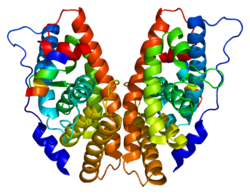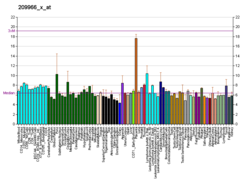1kv6: X-ray structure of the orphan nuclear receptor ERR3 ligand-binding domain in the constitutively active conformation
1lo1: ESTROGEN RELATED RECEPTOR 2 DNA BINDING DOMAIN IN COMPLEX WITH DNA
1s9p: crystal structure of the ligand-binding domain of the estrogen-related receptor gamma in complex with diethylstilbestrol
1s9q: crystal structure of the ligand-binding domain of the estrogen-related receptor gamma in complex with 4-hydroxytamoxifen
1tfc: CRYSTAL STRUCTURE OF THE LIGAND-BINDING DOMAIN OF THE ESTROGEN-RELATED RECEPTOR GAMMA IN COMPLEX WITH A STEROID RECEPTOR COACTIVATOR-1 PEPTIDE
1vjb: crystal structure of the ligand-binding domain of the estrogen-related receptor gamma in complex with 4-hydroxytamoxifen
2ewp: Crystal structure of Estrogen Related Reecptor-3 (ERR-gamma) ligand binding domaind with tamoxifen analog GSK5182
2gp7: Estrogen Related Receptor-gamma ligand binding domain
2gpo: Estrogen Related Receptor-gamma ligand binding domain complexed with a synthetic peptide from RIP140
2gpp: Estrogen Related Receptor-gamma ligand binding domain complexed with a RIP140 peptide and synthetic ligand GSK4716
2gpu: Estrogen Related Receptor-gamma ligand binding domain complexed with 4-hydroxy-tamoxifen
2gpv: Estrogen Related Receptor-gamma ligand binding domain complexed with 4-hydroxy-tamoxifen and a SMRT peptide


















